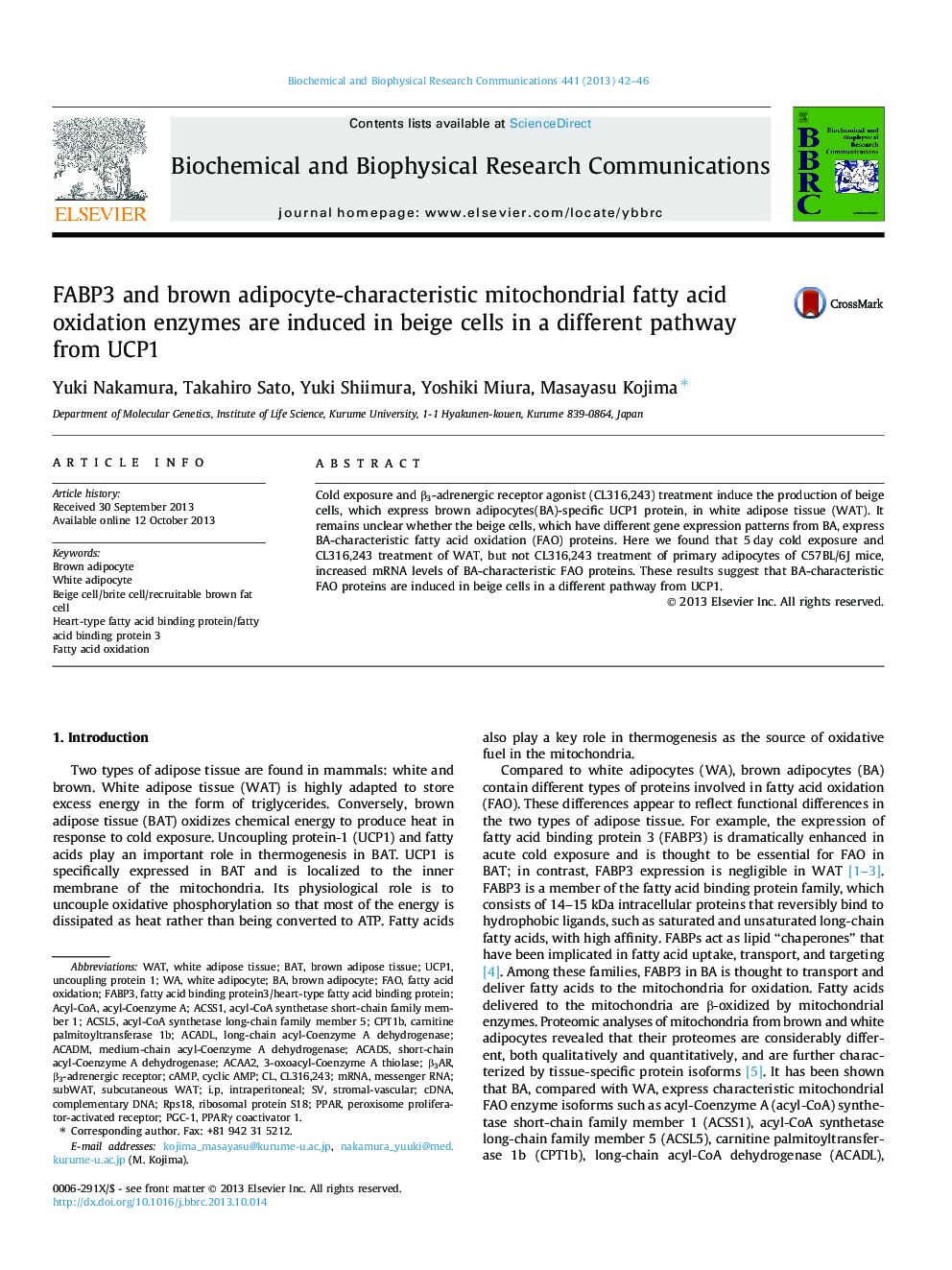| Article ID | Journal | Published Year | Pages | File Type |
|---|---|---|---|---|
| 10756643 | Biochemical and Biophysical Research Communications | 2013 | 5 Pages |
Abstract
Cold exposure and β3-adrenergic receptor agonist (CL316,243) treatment induce the production of beige cells, which express brown adipocytes(BA)-specific UCP1 protein, in white adipose tissue (WAT). It remains unclear whether the beige cells, which have different gene expression patterns from BA, express BA-characteristic fatty acid oxidation (FAO) proteins. Here we found that 5 day cold exposure and CL316,243 treatment of WAT, but not CL316,243 treatment of primary adipocytes of C57BL/6J mice, increased mRNA levels of BA-characteristic FAO proteins. These results suggest that BA-characteristic FAO proteins are induced in beige cells in a different pathway from UCP1.
Keywords
PGC-1ribosomal protein S18subcutaneous WATmedium-chain acyl-coenzyme A dehydrogenaseACADLRps18Acyl-coenzyme AACADSACAA2acyl-CoAFABP3ACSL5Acss1ACADMCpt1bmRNABATi.pcarnitine palmitoyltransferase 1bPPARcyclic AMPcAMPcDNAComplementary DNAmessenger RNAUcp1Brown adipocyteWhite adipocyteFatty acid oxidationWhite adipose tissuebrown adipose tissueintraperitonealFAOuncoupling protein 1WATβ3-Adrenergic receptorperoxisome proliferator-activated receptor
Related Topics
Life Sciences
Biochemistry, Genetics and Molecular Biology
Biochemistry
Authors
Yuki Nakamura, Takahiro Sato, Yuki Shiimura, Yoshiki Miura, Masayasu Kojima,
